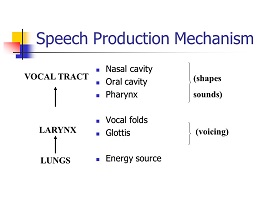Articulation definition with characteristics of speech sounds
Articulation
Articulation is the work of the speech organs aimed at producing speech sounds. When pronouncing the sound of speech, the organs of speech occupy a certain position, carry out certain movements. The work of all the pronunciation organs of speech, the set of movements of the active organs that are necessary for the formation of a separate sound, is called the articulation of the sound of speech. The articulation of the sound of speech is a complex phenomenon. We are describing here the Articulation definition.
1-Articulation characteristics of speech sounds
Articulatory phonetics is a subsection of phonetics that examines the sounds of speech from the side of the speaker, i.e. considering the articulation movements of the organs of the speech apparatus, which the speaker performs when pronouncing speech sounds.
All organs of the speech apparatus, depending on their role in the formation of sound, are divided into three groups:
1-respiratory organs
lungs, bronchi, diaphragm, trachea – are the source and conductor of the air stream.
2-phonation apparatus
vocal cords and cartilage – the source of the voice.
3-modification apparatus
resonators (nasal, oral, pharyngeal cavities) and articulators (palatine curtain, tongue, lips, and other movable organs).
All organs of speech can be divided into two groups:
1) The active organs of speech are mobile and take an active part in the formation of sound:
- vocal cords that produce voice.
- tongue, which is the most flexible and mobile organ.
- lips have a significant effect on the condition of the oral cavity.
- soft palate with a tongue, directing the airflow either to the mouth or to the nasal cavity.
- the back wall of the pharynx, which reduces some sounds.
- the lower jaw, the movement of which controls the space between the teeth, as well as the position of the lips.
- lungs that provide air for sounds.
2) Passive organs of speech:
- teeth,
- alveoli,
- solid sky,
- resonator walls.
During speech production, any sound goes through three phases of articulation:
- excursion, that is, at the moment when the organs of speech take the position necessary for the production of sound.
- exposure, that is, the period of time when the organs of speech are in certain articulatory positions.
- recursion, that is, the moment when the organs of speech either return to a state of rest or are preparing to produce the next sound.
Coarticulation.
Speech sounds affect each other in the flow of speech; thus they are expressed differently. These changes in speech sounds are observed both within words and at word boundaries. This relationship between sounds in coherent speech is called coarticulation.
Assimilation.
Types of assimilation.
The consequence of coarticulation is assimilation – a phenomenon when one of the sounds becomes completely or partially similar to the neighboring sound.
There are 3 types of assimilation:
3.1) Direction.
The influence of neighboring sounds in English can act in:
– a progressive direction.
When some of the articulatory features of the next sound change under the influence of the previous sound, which remains unchanged, then assimilation is called progressive.
– regressive direction. When the next sound influences the formation of the previous one, assimilation is called regressive.
– double direction. This means a complex interaction of sounds.
3.2) The degree of completion.
According to the degree of assimilation, it can be:
– complete (in the case when two adjacent sounds become similar to each other or merge into a single one (less shy))
– incomplete (when the similarity of adjacent sounds is partial (for example, voiced sounds [w, l, r] partially doubled when preceded by a voiceless [p, t, k, s, f, Ố) in words: sweet, place, try))
3.3) The degree of stability.
Many phenomena of assimilation have become mandatory in modern English. Changes that have occurred over a period of time in a particular word are called historical. In addition, there are quite widespread, but not obligatory cases of assimilation, which can be traced mainly at the word boundary. Here are some more examples of sound changes that can result from the coarticulation process:
- labialization
- nasalization
- loss of plosion
- palatalization
- velarization
4.Articulatory characteristics of sounds:
the place of articulation where the organs of sounds can come close to each other.
organs of articulation
the manner of articulation is determined by the obstacle.
position of the soft palate and nasal/oral cavity
Accommodation.
Accommodation arises between consonants and vowels, usually standing side by side, and consists in the fact that the subsequent sound adapts to the previous one – progressive accommodation or the previous sound adapts to the next – regressive accommodation. Accommodation is always a partial adaptation of sounds.
Elision.
Elysia – the omission of sound in rapid speech. This happens both within words and at their boundaries. Articulation characteristics of speech sounds
